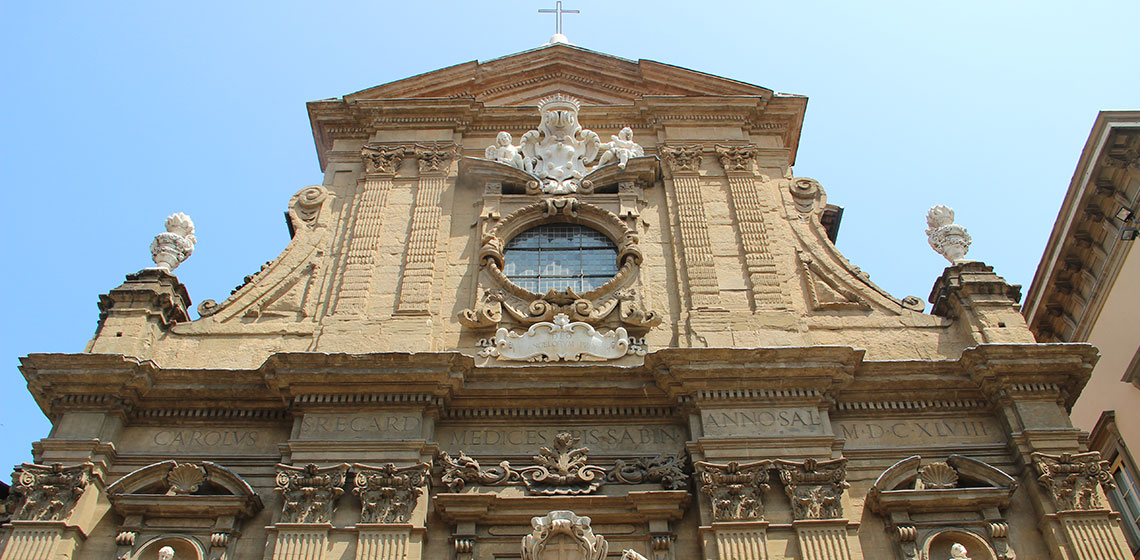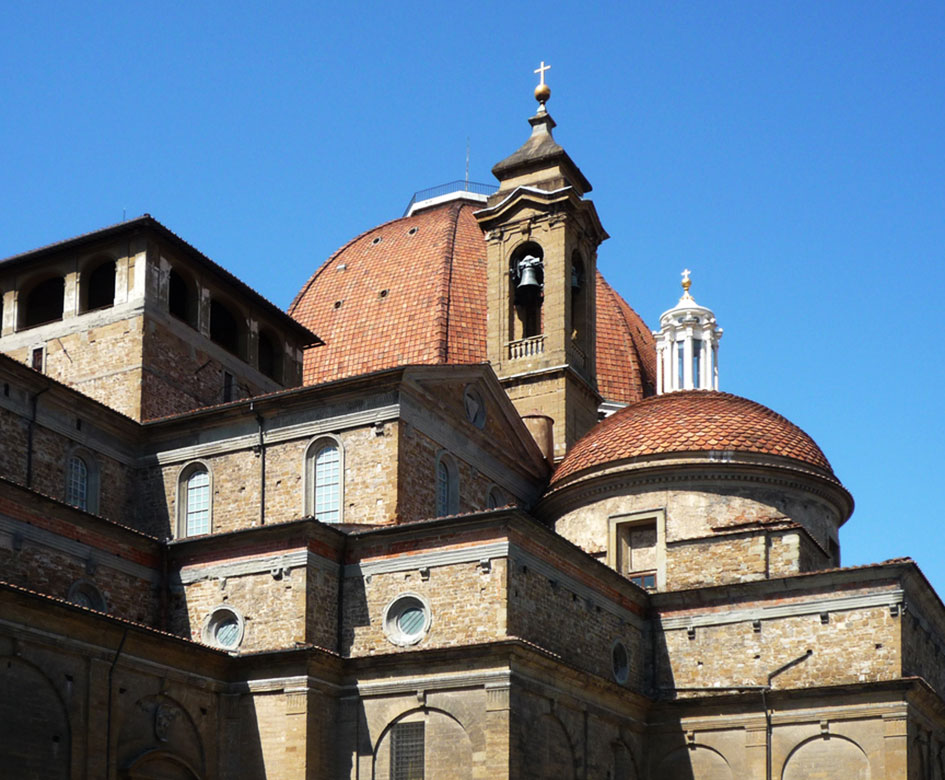
The Florentine Baroque
A journey through the beautiful Baroque style in Florence.
Florence is a Renaissance city par excellence.
Here, the city’s artistic and cultural movement gave rise to extraordinary works – wonders that people from all over the world come to see.
But the city also reveals traces of the Baroque style: if you’re not familiar with this side of Florence, this itinerary will give you an idea of what not to miss.
San Firenze Complex
The starting point for a "Baroque" tour of Florence is the San Firenze Complex located in its namesake piazza. Standing before the structure, it won’t take long to recognize the style’s unmistakable features, as the façade is decorated with the period’s typical elements.
The palace was originally a Filippini convent dedicated to Florentine San Filippo Neri, though it later became the city’s courthouse. Today, the structure houses the Franco Zeffirelli International Center for Performing Arts, which contains more than 250 of the artist’s masterpieces including first drafts, drawings and costumes. You can also visit the church located on the left side of the complex. The interior was designed following a uniform style and decorated with works by leading artists of 17th and 18th-century Florence.
Piazza di S. Firenze, 5
Church of Santi Michele e Gaetano
The tour continues in piazza degli Antinori (at the end of via de’ Tornabuoni). Here, you’ll find one of the churches that most represent the Baroque style: the Church of Santi Michele e Gaetano.
The façade was built using Florence’s typical pietraforte stone (the most widely used stone during those centuries), creating a dark background that forms a stark contrast with the numerous statues and white decorations. Inside, you can trace the history of sacred art in 17th-century Florence: you’ll find one the city’s rare Baroque sculpture cycles composed of statues representing the Apostles and Evangelists, not to mention marble panels with scenes of the lives of saints in the lower niches, all built by a variety of artists of the time.
Piazza degli Antinori
The Chapel of the Princes
The third stage of your tour takes you to the splendid complex of the Medici Chapels, where along with Michelangelo's New Sacristy you’ll find the so-called Chapel of the Princes: an imposing and sumptuous setting requested by Cosimo I to serve as the Medici dynasty mausoleum.
The interior is sure to amaze: the décor is completely adorned with precious stone inlays, a brilliant blaze of materials and colors. The octagonal layout features the coats of arms of pro-Medici Tuscan cities, all dominated by monumental tombs dedicated to the Medici Grand Dukes and crowned by an enormous dome (the second largest after Brunelleschi’s main structure).
Piazza di Madonna degli Aldobrandini, 6

Hall of Luca Giordano in Palazzo Medici Riccardi
A short way away from the Medici Chapels, still inside the San Lorenzo neighborhood, you’ll find the splendid Renaissance palace designed by Michelozzo: Palazzo Medici Riccardi.
Inside, this age-old Medici residence contains masterpieces of immeasurable value: among these, besides the famous Chapel of the Magi frescoed by Benozzo Gozzoli, you’ll find the Galleria (or "Hall of Mirrors") with a fresco cycle by Neapolitan painter Luca Giordano.
The work was commissioned by the Riccardi family (their residence after the Medici ceded the structure) and portrays a series of mythological episodes intermixed with cardinal virtues and vices: an incredible feast for your eyes.
Via Cavour, 3
Santissima Annunziata Basilica
Your Baroque journey ends with one Florence’s many beautiful basilicas: that of Santissima Annunziata, located in the piazza bearing the same name, famous for its three-sided loggia. Although the church dates much farther back than the Baroque period, its interior was harmoniously redesigned in the second half of the 17th century.
This structure is truly one of the most splendid examples of the Florentine Baroque, whose inside forms a stark contrast to the sober exterior. You’ll find an extravagant array of marble, stucco, paintings and gilded ornaments distributed along the church’s wide nave. The adjoining side chapels preserve works by some of the most outstanding artists of 17th-century Florence.
Piazza SS.ma Annunziata
Credits:






 All the services are provided by local merchants
All the services are provided by local merchants By using this site you support Florence
By using this site you support Florence We offer products with high-quality standards
We offer products with high-quality standards You stay sustainable
You stay sustainable It's a 100% trustworthy website
It's a 100% trustworthy website